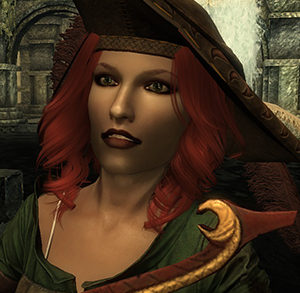Roleplaying Games are typically full of mystery and intrigue and the player characters may be part of an overall organization or group, but are those organizations really that secret? And how does the presence of secret societies affect a game?
The Role of a Secret Society
In pop culture, secret societies are shadowy organizations unknown to the general populous, often with far-reaching powers and influence, working to advance an (often sinister) agenda. This certainly makes for good storytelling, but not all secret societies have political aims; some simply guard or horde knowledge while others exist more as social clubs. Additionally, not all secret societies conceal their existence or goals, only their inner functioning and members; Skull and Bones and Freemasonry do not deny their existence, but their members remain secret. An extremely public secret society would be the Klu Klux Klan as they make no secret of their existence or goals, but their members, events, and meetings often remain clandestine.
All For One
With rare exceptions, like the game Paranoia, when secret societies are used in a game the player characters are often working within the same society. This may be an informal/under-the-radar assortment of government officials, supernatural hunters (or monsters) seeking to hide the existence of the supernatural from the public, or collectors of a knowledge too terrible to share with the rest of mankind. These types of campaigns often mean the PCs have little help outside their immediate group to achieve their goals and establishes a reason for characters of seemingly different backgrounds to cooperate.
Secrets and Societies Within Secret Societies
Like any organization, sub-sects will often form from within. The Hermetic Order of the Golden Dawn was formed within Freemasonry and devoted to the study of the occult and paranormal. These sub-societies will share the larger society’s goals, but may have a different means to that end or may also have an additional focus outside of the group. If the player characters are all part of a society, it may be prudent to introduce sub-societies with their own secrets.
Player Character Intrigue
While, as a GM, I don’t condone player in-fighting, I also think it’s important that each character have their own goals and motivations that may not fully coincide. Character fighting should be avoided (unless the game is built around it), but character drama should be relished (always). When some or all of the player characters are each a member of a society or sub-society which shouldn’t be revealed to other characters, this can add spice to a game, blending in personal character drama, the overall plot, and sub-plots and threads introduced by the society. Perhaps, in the hunt of a McGuffin one society wants to obtain a secret knowledge, while another wants to destroy it—each for the betterment or protection of the world. This can lead to in-character discussions and debates or subtle trickery behind the backs of the rest of the group. The GM must be careful to strike a balance to ensure the characters have no reason to fight directly or attempt to remove a PC from the game (even temporarily), but when done right, the subterfuge between players can be a memorable experience that leads into its own plot hooks. Characters should not have to like each other, but they should have common enough goals to work with each other.
As Antagonists
Whether the player characters are part of a society or not, having a secret society as an antagonist can lead to some healthy paranoia and unique outcomes in gameplay. While an obvious goal of antagonist secret societies may be to tear down the world in some way—collapsing government or the economy to reform it, unleashing terrors on the world in exchange power, or freeing world-devouring entities due to a shared madness—consider societies that work against the players for somewhat less nefarious reasons. Perhaps the antagonist society is hoarding knowledge or is trying to protect the world, but their means is at odds with the player characters.
Regardless of their goals, it’s best not introduce the antagonist society as an organization at first. It should at first seem like an individual or small group is acting against the characters on their own and only eventually should it be known that their numbers are greater than they first appeared. This method will hopefully introduce a level of paranoia about any opposition or even information gatherer the characters encounter.
Introduction and Induction
Even if a current campaign has not yet introduced secret societies, their very nature allows them to be introduced at any point in a game, and may even be ret-conned into existence simply by learning that a character is or was a member of a society. Inviting a player character into a society itself may be an illusive act, with subtle tests and puzzles. The group Cicada 3301 posted puzzles involving linguistics and code online between 2012 and 2017, with the seeming intent of finding new members. It’s possible that the players are (or have been) presented with puzzles and challenges that they may not realize are their gateway into a society.
For a twist on the classic dungeon crawl, what if some of the traps the characters come across were not set by monsters or the “big bad,” but by secret societies evaluating one or two of the characters?
Once introduced to the secret society, the characters must then be inducted. This need not be some sort of fraternity hazing ritual, but ritual should be involved. More importantly, not only should there be a reason the society wants the characters to join, but the characters should be given reason to join the society and not divulge its secrets. The latter could simply be done by promising mutually assured self-destruction, but I’ve found that some players will chafe at any threat. What typically works more is the promise of greater rewards in or out of character. Perhaps achieving goals for the society earns the player character more experience points or plot tokens to spend later.
New Societies
There have been a lot of secret societies known and unknown through the ages. I highly recommend John Michael Greer’s The Element Encyclopedia of Secret Societies for a look at some societies that could be introduced to the game. But to build a new society for a game consider a few key points:
- What is the secret society’s name (and, ideally, why)?
- What is their main goal or purpose?
- What kind of individuals make up their membership?
- How are they organized and who are their leaders?
- Where and when do they meet?
- How do they communicate with members in secret and not meeting?
- Do they keep their identities secret even within the group?
- Do they have a costume or means of concealment?
- What is their crest or sigil?


Recent Comments